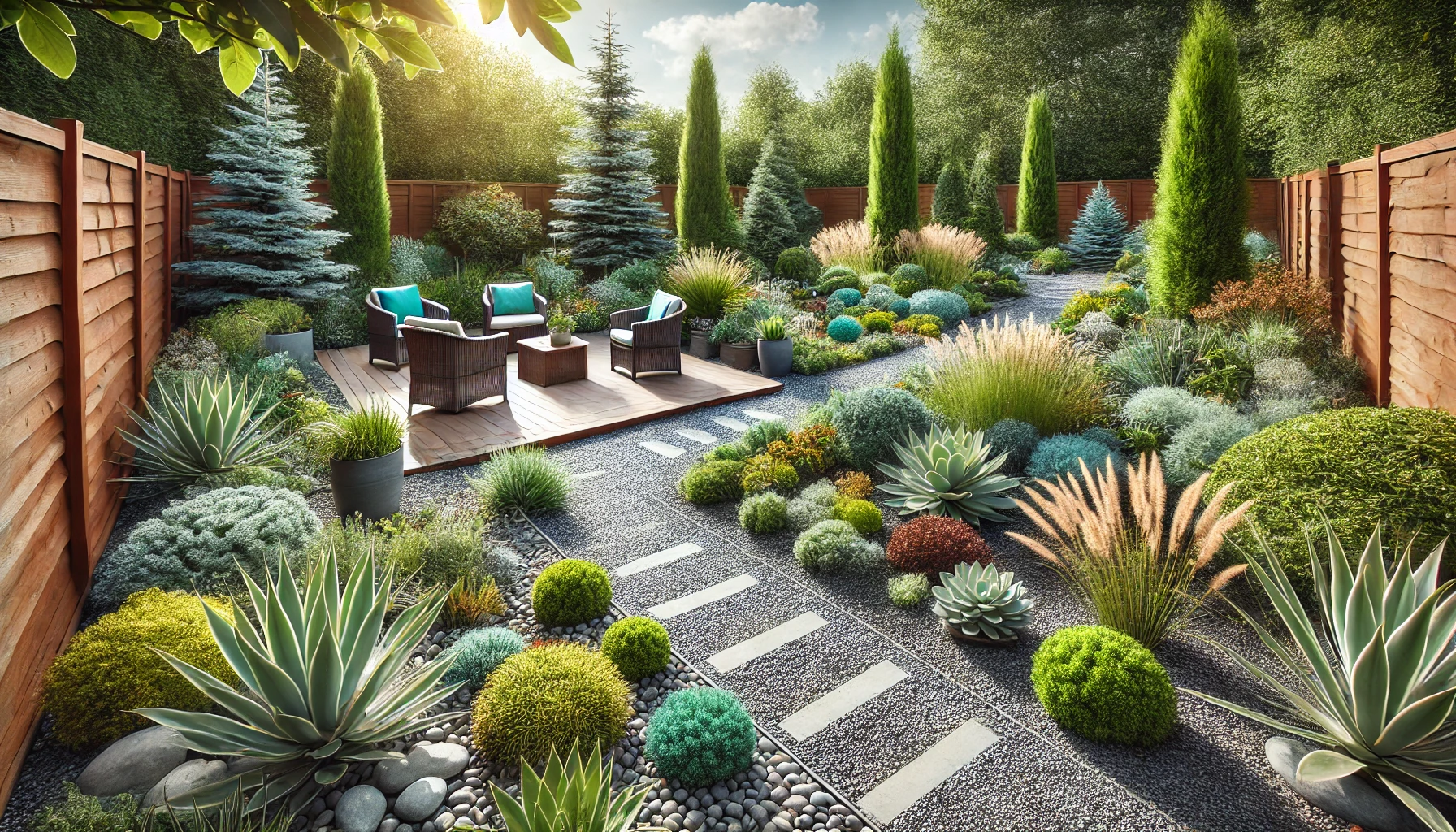In today’s fast-paced world, finding time to maintain a beautiful garden can be challenging. However, a low-maintenance garden allows you to enjoy a lush, vibrant outdoor space without spending hours on upkeep. Whether you have a busy schedule or simply prefer a more hands-off approach to gardening, this guide will show you how to design and maintain a beautiful, easy-care garden.
1. Why Choose a Low-Maintenance Garden?
A low-maintenance garden provides several benefits, including:
- Time Efficiency: Spend less time on watering, weeding, and pruning.
- Cost-Effective: Reduced need for fertilizers, pesticides, and garden tools.
- Sustainability: Lower water usage and environmentally friendly practices.
- Relaxation and Enjoyment: More time to enjoy your outdoor space without constant work.
2. Planning Your Low-Maintenance Garden
Thoughtful planning is crucial for creating an efficient, easy-to-manage garden. Consider the following:
- Assess Your Space:
- Determine sunlight exposure, soil type, and drainage.
- Plan around existing features like trees, patios, or pathways.
- Choose the Right Plants:
- Opt for native and drought-resistant plants that thrive in your climate.
- Select perennials instead of annuals for long-lasting growth.
- Design for Simplicity:
- Use larger planting areas with fewer plant varieties for a cohesive look.
- Minimize high-maintenance elements like lawns or delicate flowers.
3. Best Low-Maintenance Plants
Choosing the right plants significantly reduces garden upkeep. Consider these hardy, drought-tolerant, and pest-resistant options:
- Succulents and Cacti: Require minimal watering and thrive in dry conditions.
- Examples: Aloe Vera, Agave, Sedum, and Echeveria.
- Evergreen Shrubs: Provide year-round greenery with minimal pruning.
- Examples: Boxwood, Juniper, and Holly.
- Drought-Resistant Perennials: Flourish with little water and resist pests.
- Examples: Lavender, Sage, Yarrow, and Coneflower.
- Ornamental Grasses: Add texture and movement to the garden.
- Examples: Fountain Grass, Feather Reed Grass, and Blue Fescue.
- Ground Covers: Suppress weeds and reduce the need for mulching.
- Examples: Creeping Thyme, Sedum, and Mondo Grass.
4. Designing for Minimal Upkeep
Create a low-maintenance garden by designing with simplicity and functionality in mind:
- Limit Lawn Areas: Lawns require regular mowing, watering, and fertilizing. Replace grass with ground covers, gravel, or paving stones.
- Group Plants by Watering Needs: Place plants with similar water requirements together to simplify irrigation.
- Choose Mulch Wisely:
- Mulch conserves moisture, suppresses weeds, and improves soil health.
- Use organic mulch like bark chips, straw, or compost for nutrient benefits.
- Inorganic options like gravel and pebbles are long-lasting and low-maintenance.
- Opt for Simple Shapes and Layouts:
- Use symmetrical designs and repetitive plant patterns for a tidy look.
- Minimize intricate borders or complex shapes that require precision trimming.
5. Efficient Irrigation Systems
An efficient irrigation system reduces manual watering and saves time:
- Drip Irrigation: Delivers water directly to the roots, minimizing evaporation and preventing overwatering. Ideal for flower beds and vegetable gardens.
- Soaker Hoses: Slow-release watering along the hose’s length. Suitable for dense planting areas.
- Automatic Timers: Schedule watering at optimal times, such as early morning or late evening, to maximize water efficiency.
- Rain Barrels: Collect rainwater for an eco-friendly and cost-effective water source.
6. Low-Maintenance Hardscaping
Incorporate hardscaping elements that require minimal upkeep:
- Paved Pathways and Patios: Use stone, brick, or gravel for durable, weed-free walkways.
- Raised Beds and Planters: Reduce bending and kneeling for easy gardening and minimize weed growth.
- Decorative Rocks and Pebbles: Add visual interest without the need for maintenance.
- Outdoor Furniture: Choose weather-resistant materials like metal, teak, or synthetic rattan.
7. Minimizing Weeds and Pests
Weeds and pests can be time-consuming to control. Follow these tips for minimal maintenance:
- Use Ground Covers and Mulch: Suppress weed growth and reduce soil exposure.
- Plant Densely: Close planting minimizes open soil where weeds can sprout.
- Choose Pest-Resistant Plants: Opt for plants less attractive to pests, like lavender, sage, or marigolds.
- Natural Pest Control: Encourage beneficial insects like ladybugs and praying mantises for biological pest control.
- Avoid Chemical Pesticides: Use organic solutions like neem oil or insecticidal soap.
8. Pruning and Maintenance Tips
Even in low-maintenance gardens, occasional pruning and upkeep are necessary:
- Minimal Pruning: Choose slow-growing plants that require less pruning.
- Self-Cleaning Flowers: Select varieties that drop spent blooms naturally, eliminating deadheading.
- Seasonal Cleanup: Perform major cleanups once or twice a year, such as leaf removal in fall or cutting back perennials in early spring.
- Automatic Feeders: Use slow-release fertilizers to reduce feeding frequency.
9. Year-Round Interest with Minimal Effort
Create a visually appealing garden throughout the year without much work:
- Evergreens and Perennials: Ensure color and structure year-round.
- Flowering Shrubs and Bulbs: Add seasonal interest with minimal maintenance.
- Ornamental Grasses: Provide texture and movement even in winter.
10. Conclusion
Creating a low-maintenance garden doesn’t mean compromising on beauty or functionality. By choosing the right plants, designing with simplicity in mind, and utilizing efficient watering systems, you can enjoy a stunning garden with minimal effort. With careful planning and strategic choices, you can have a lush, vibrant outdoor space that enhances your home while fitting into your busy lifestyle.

